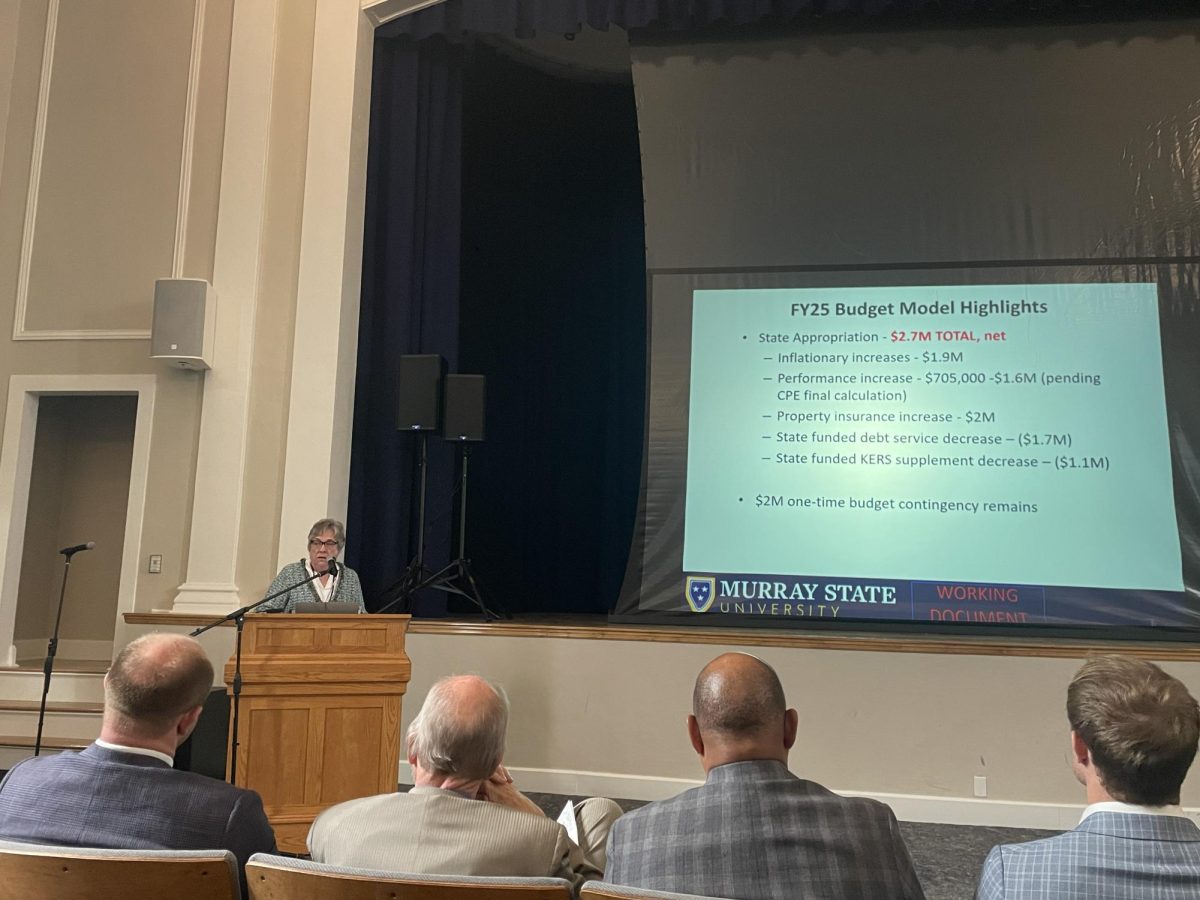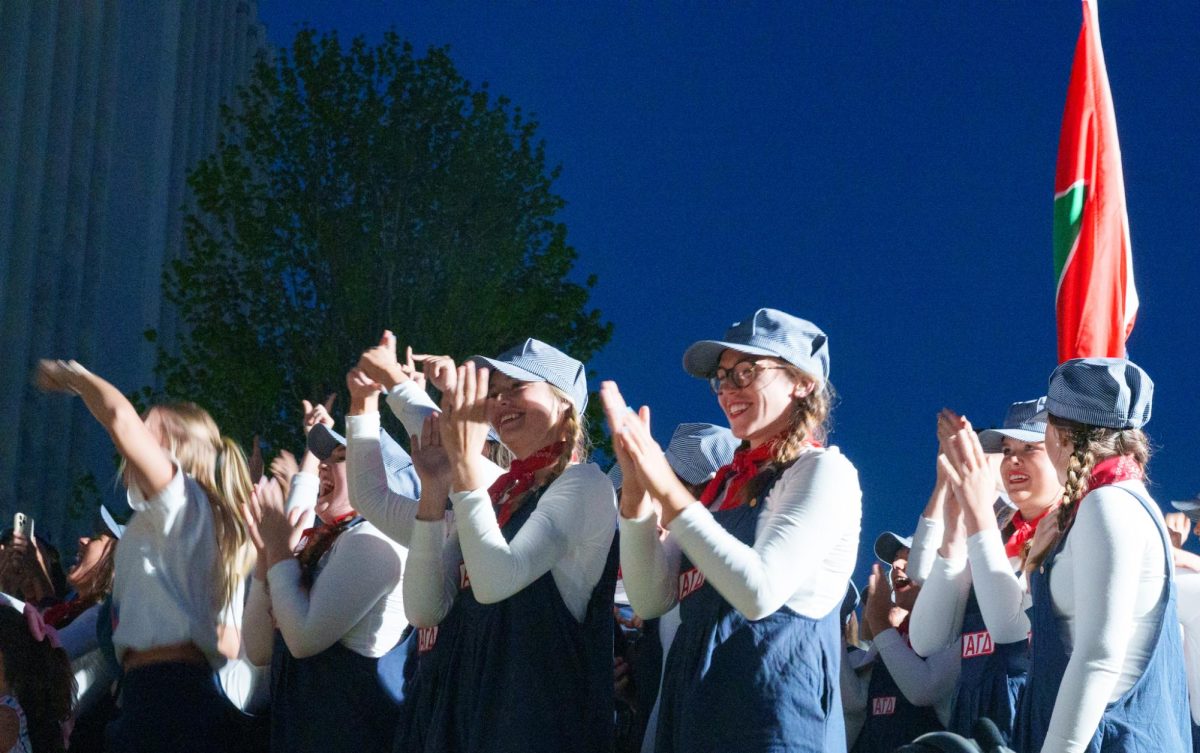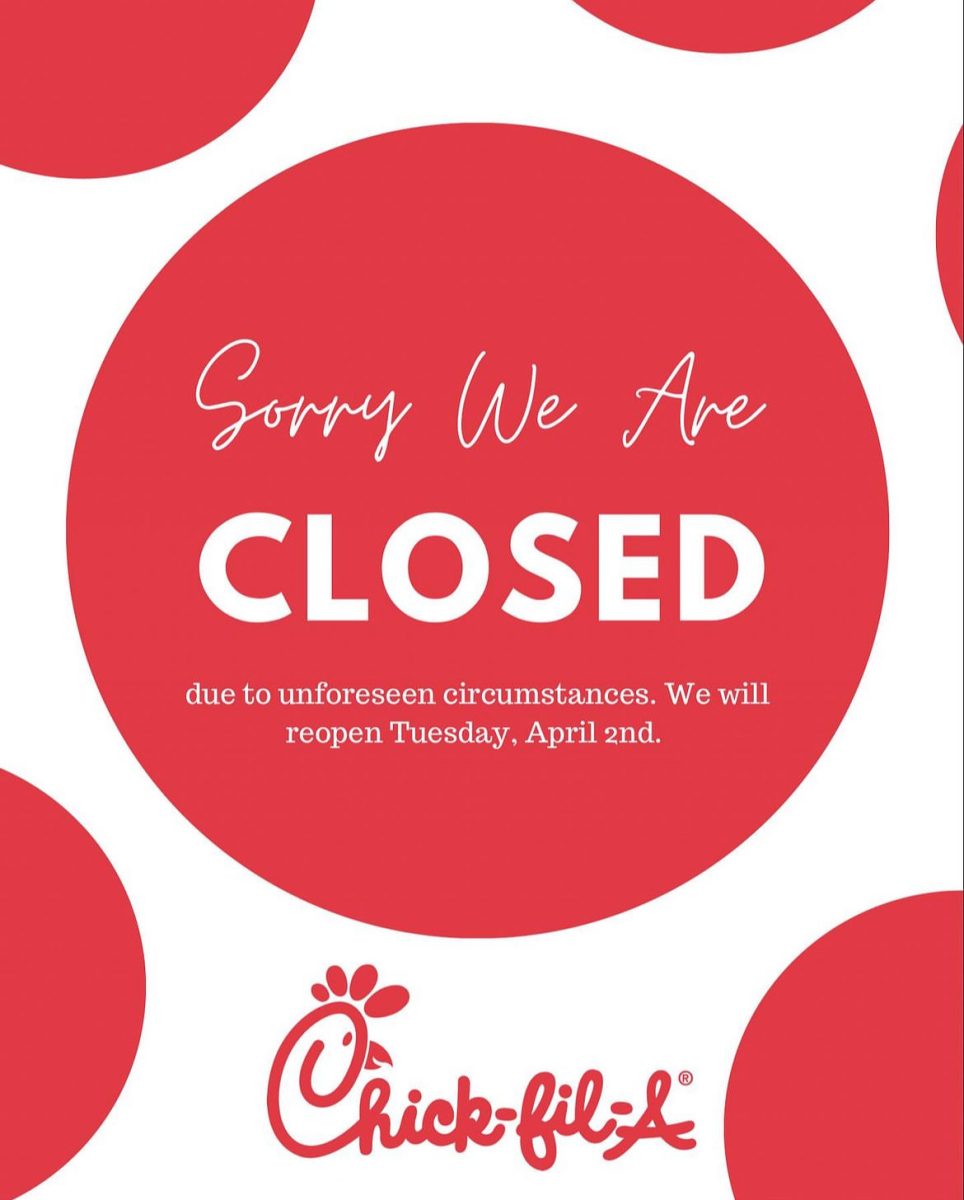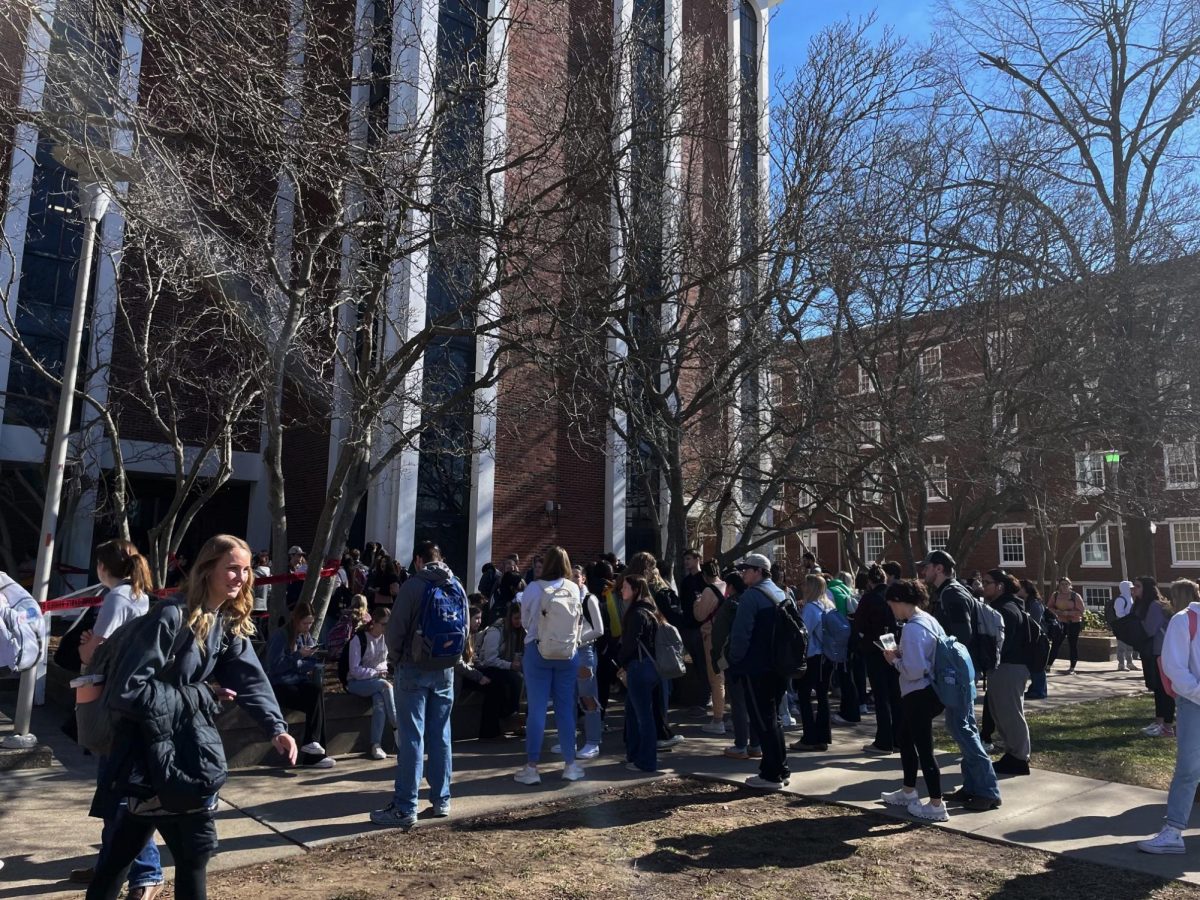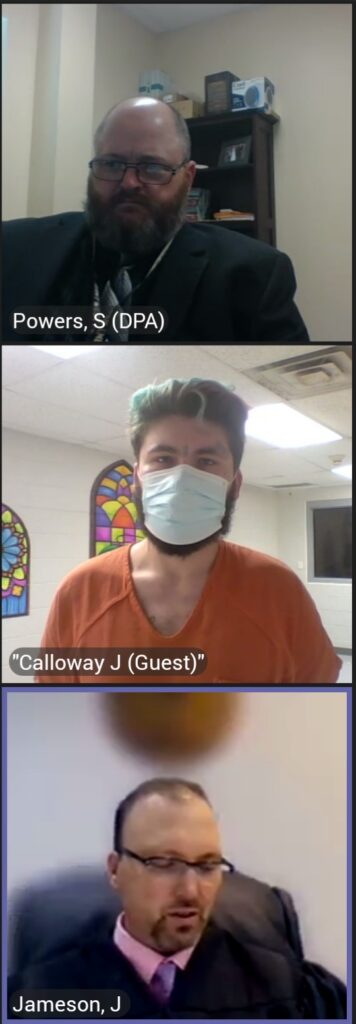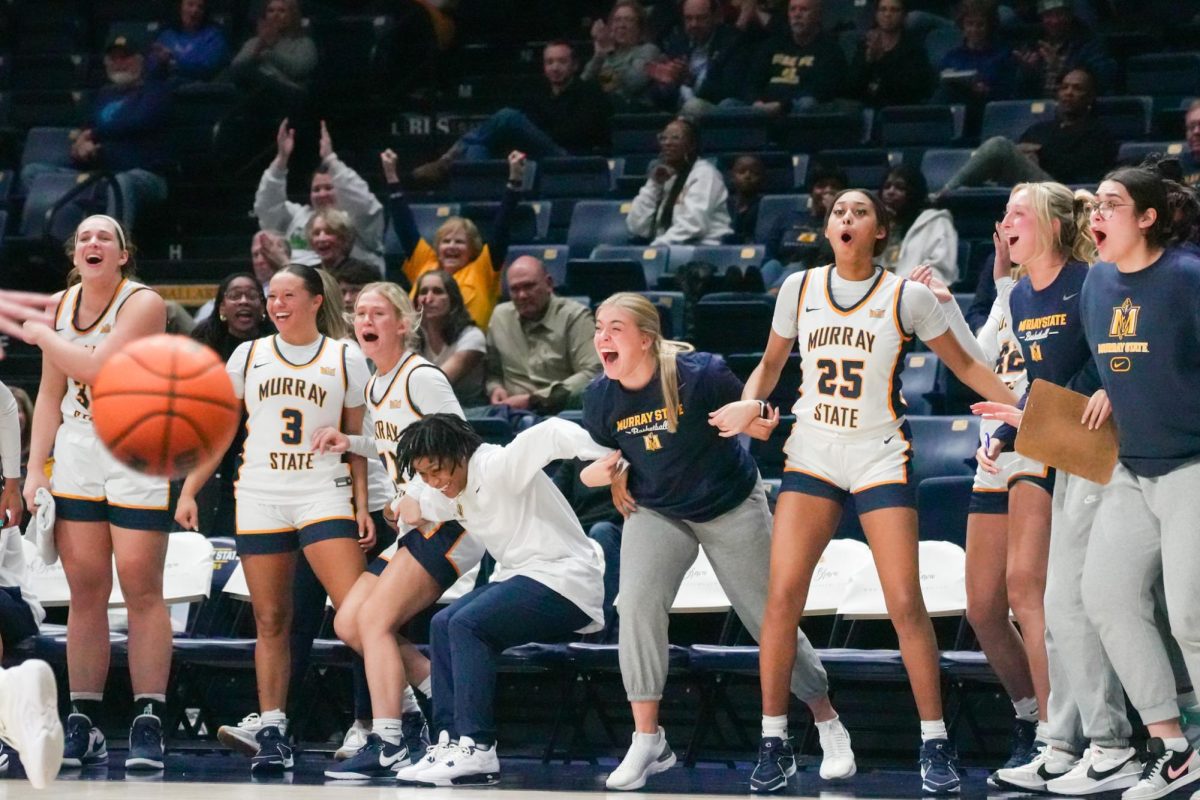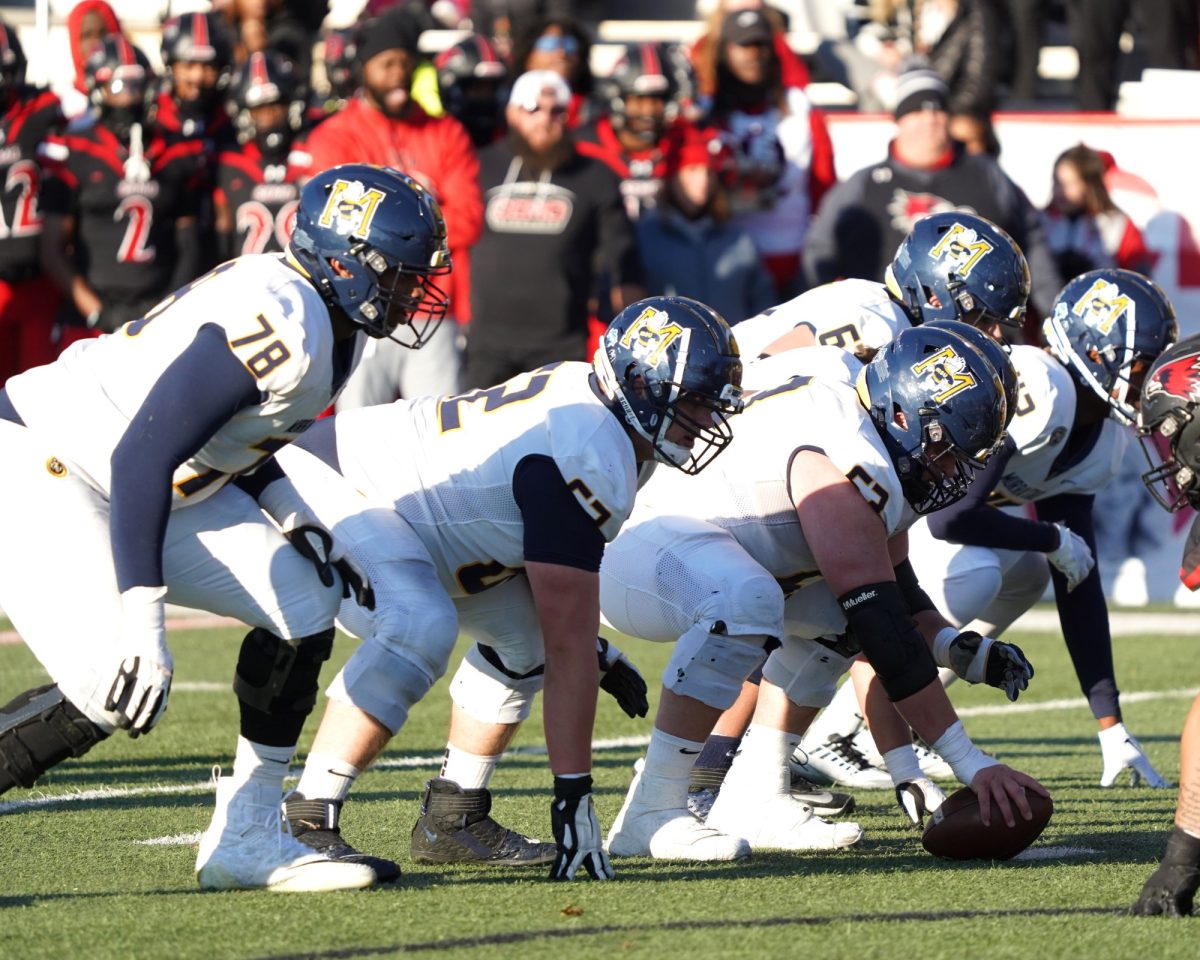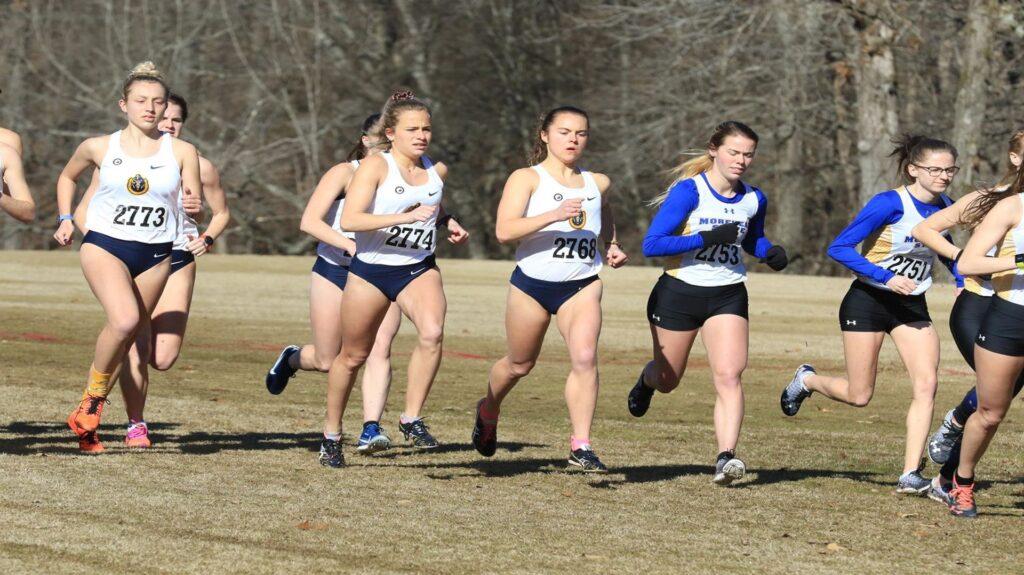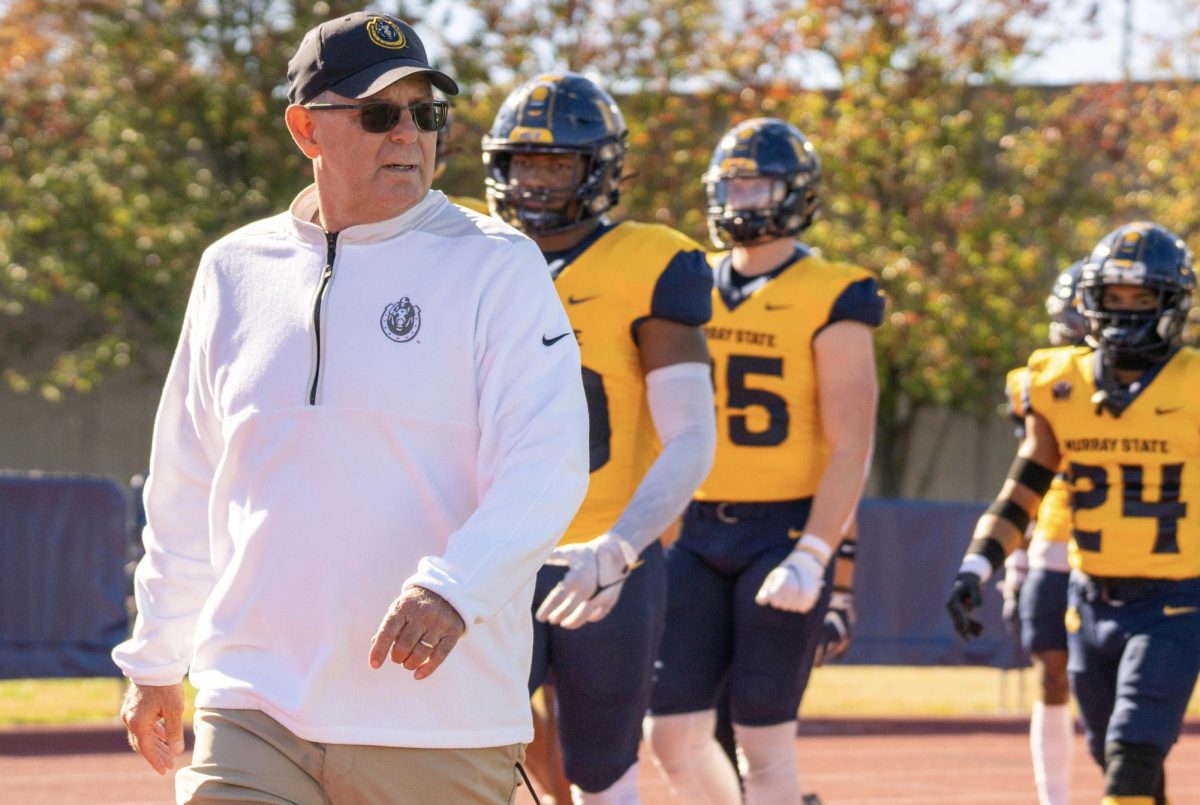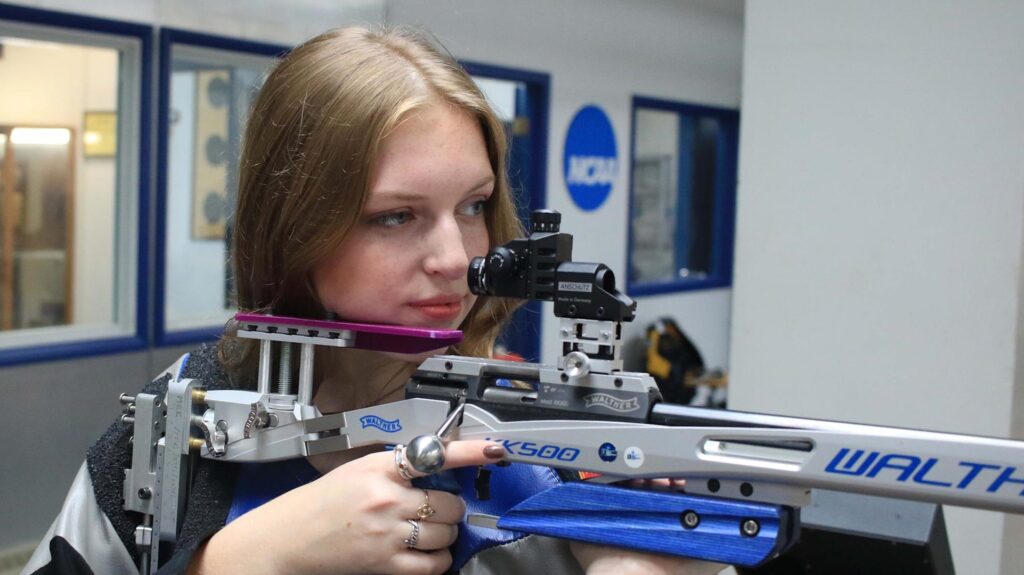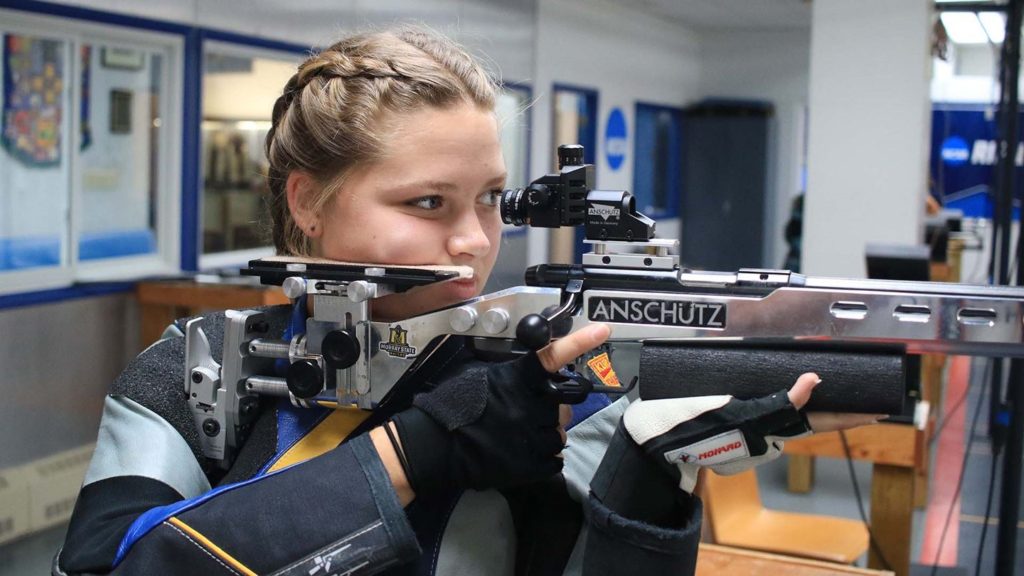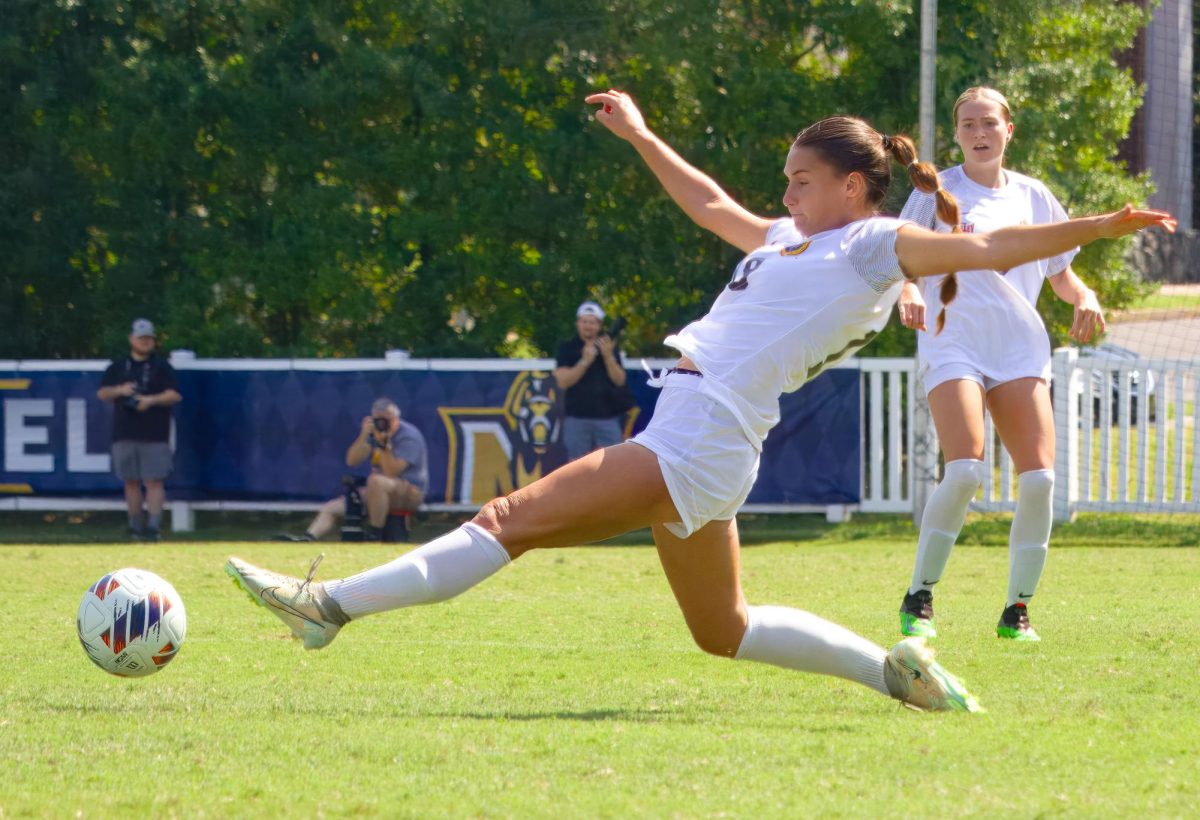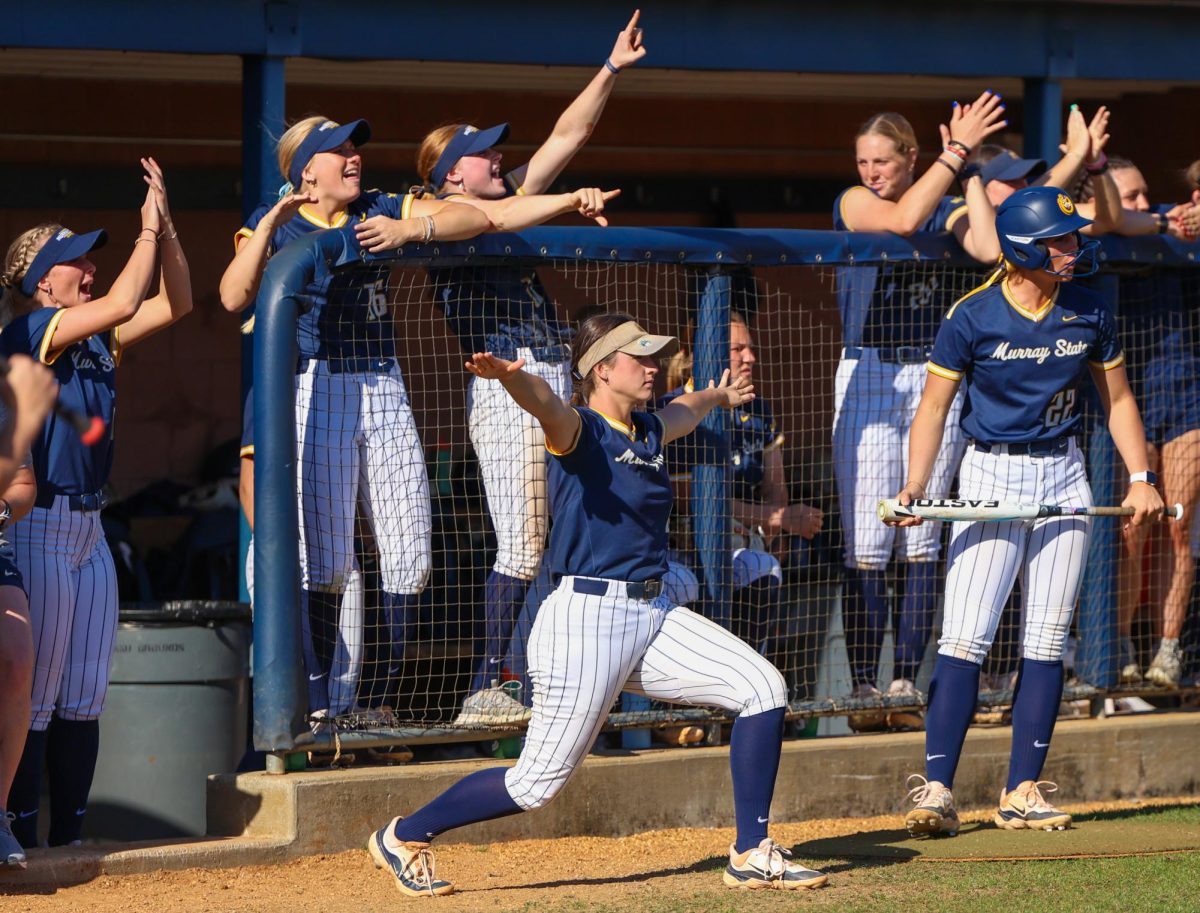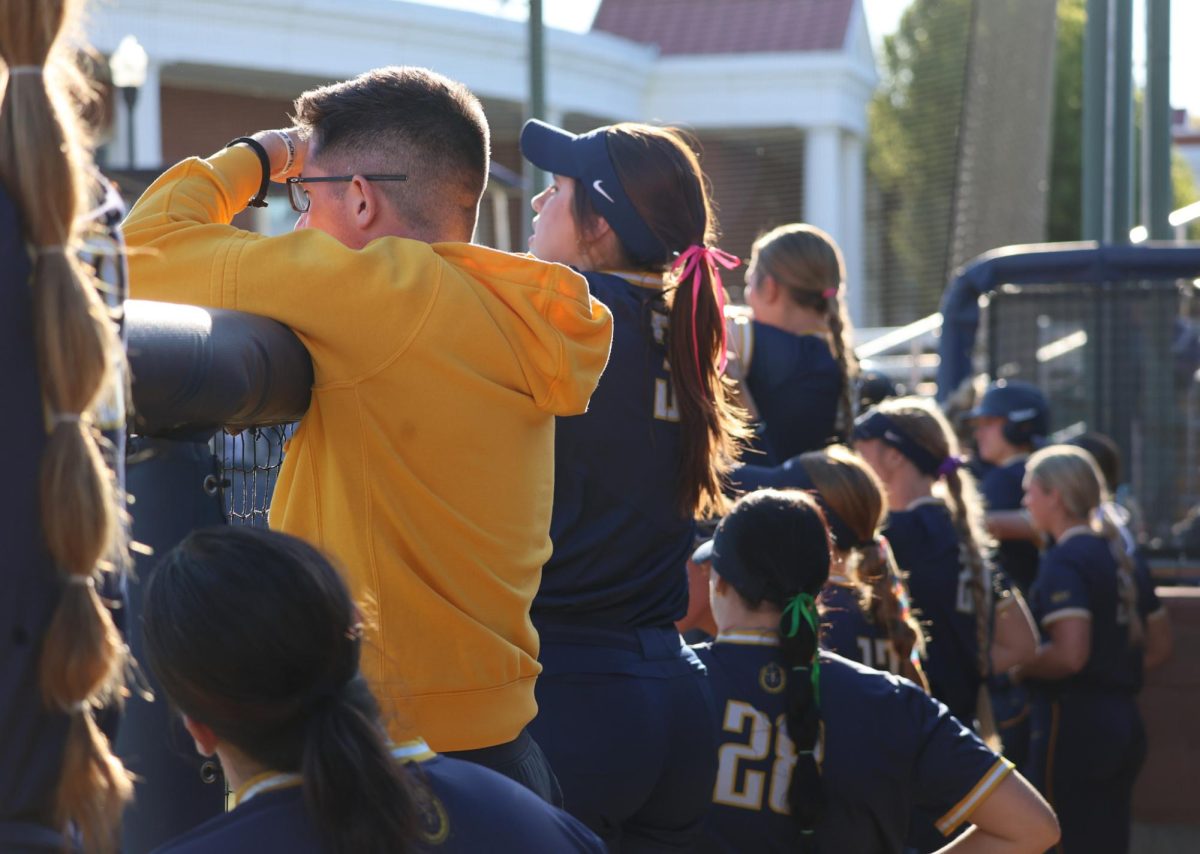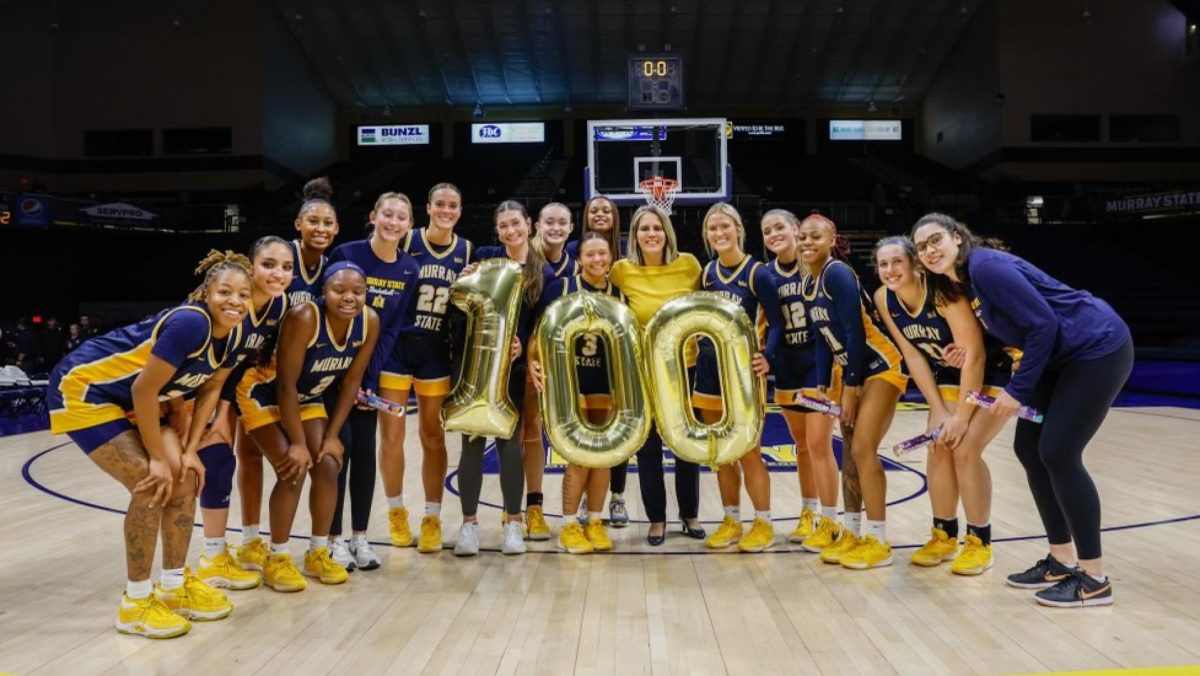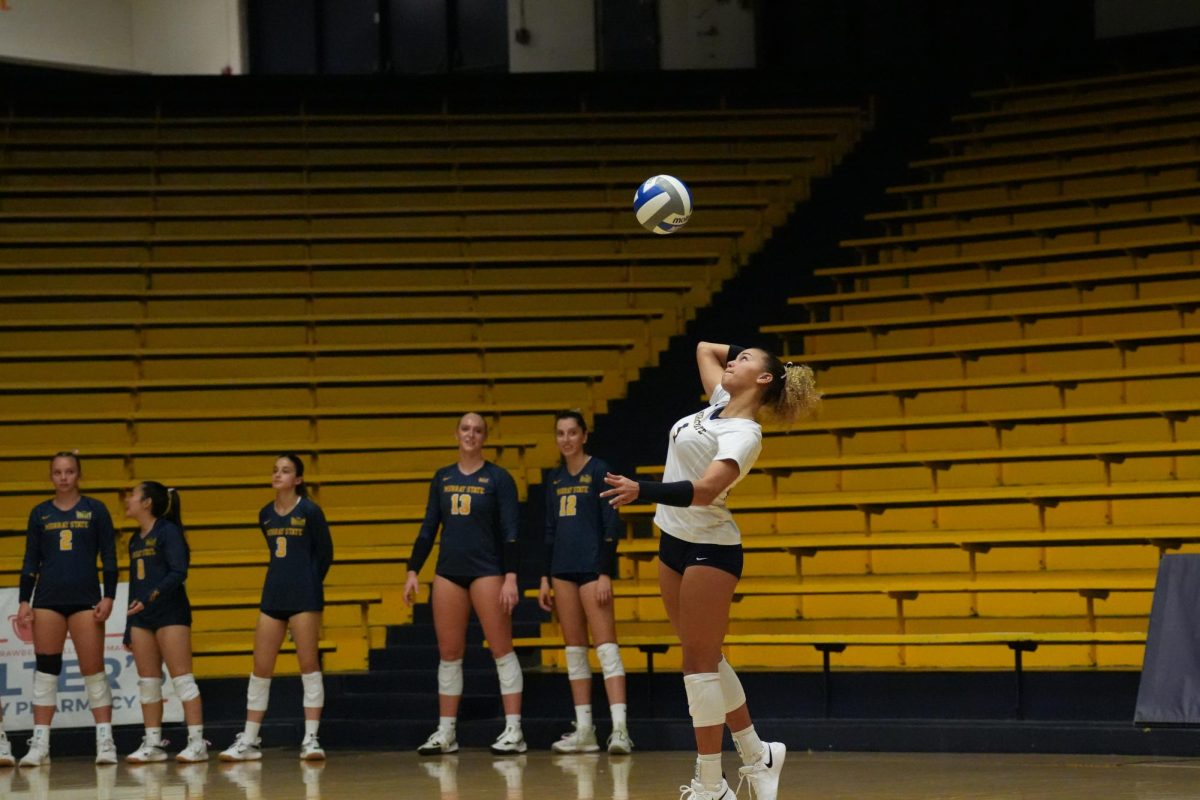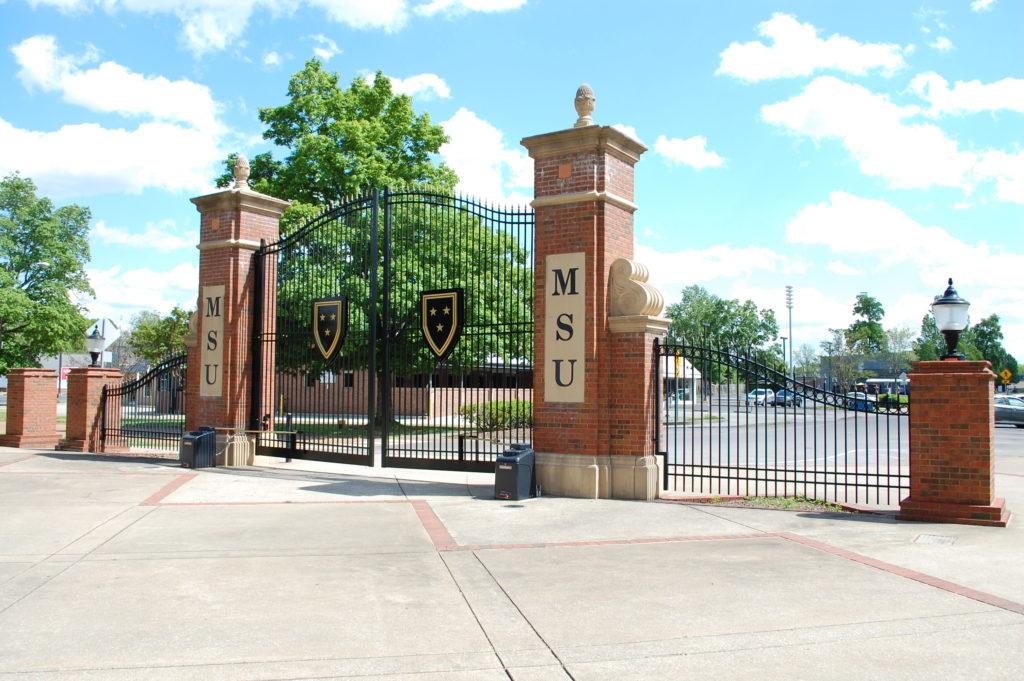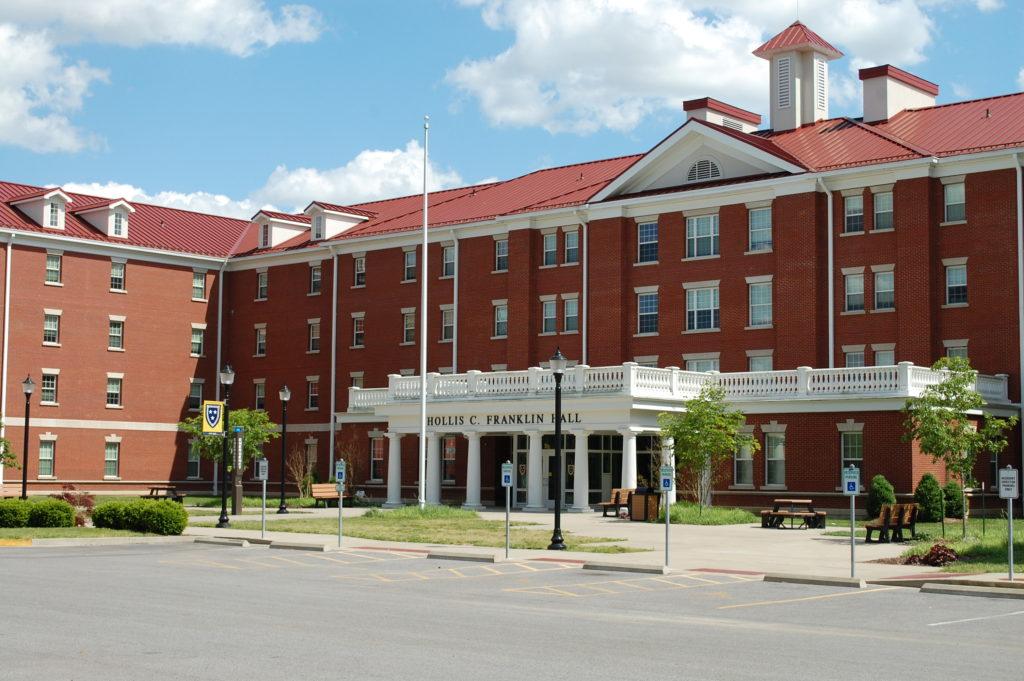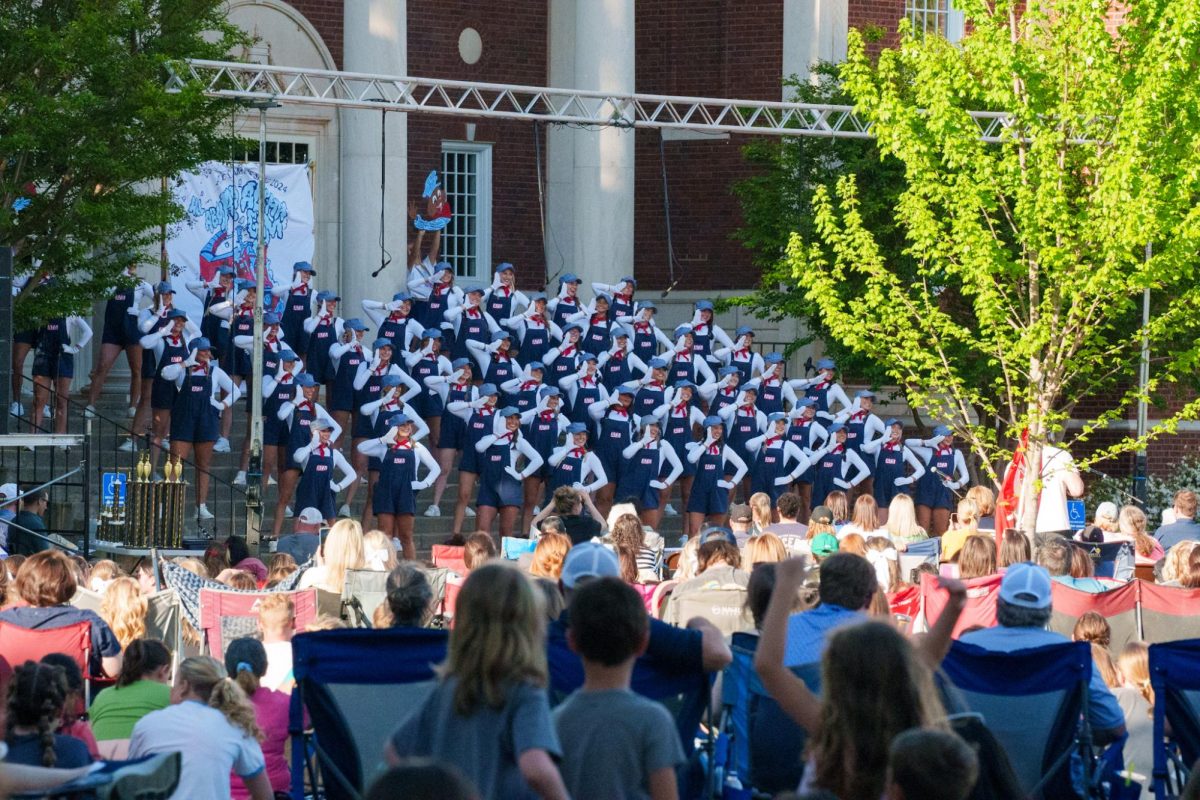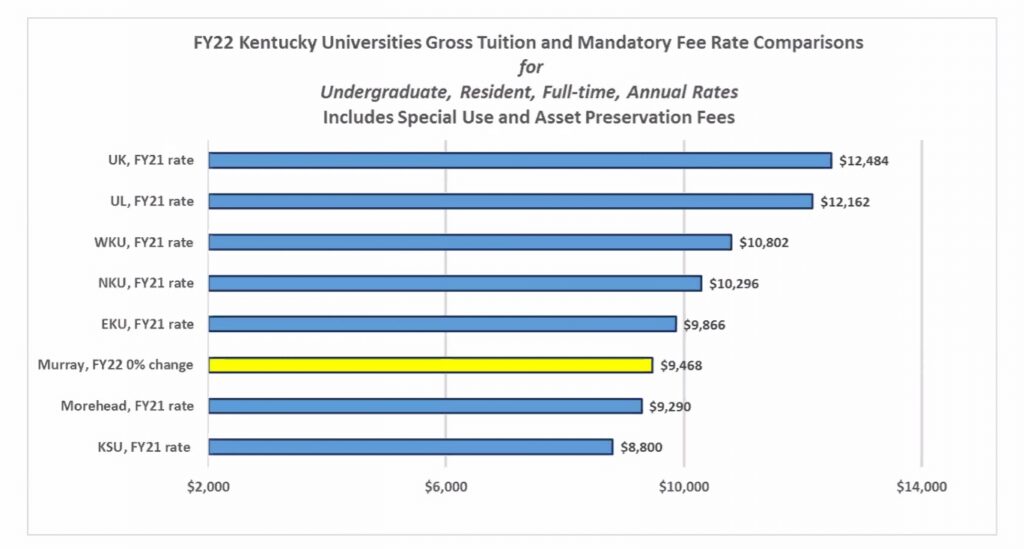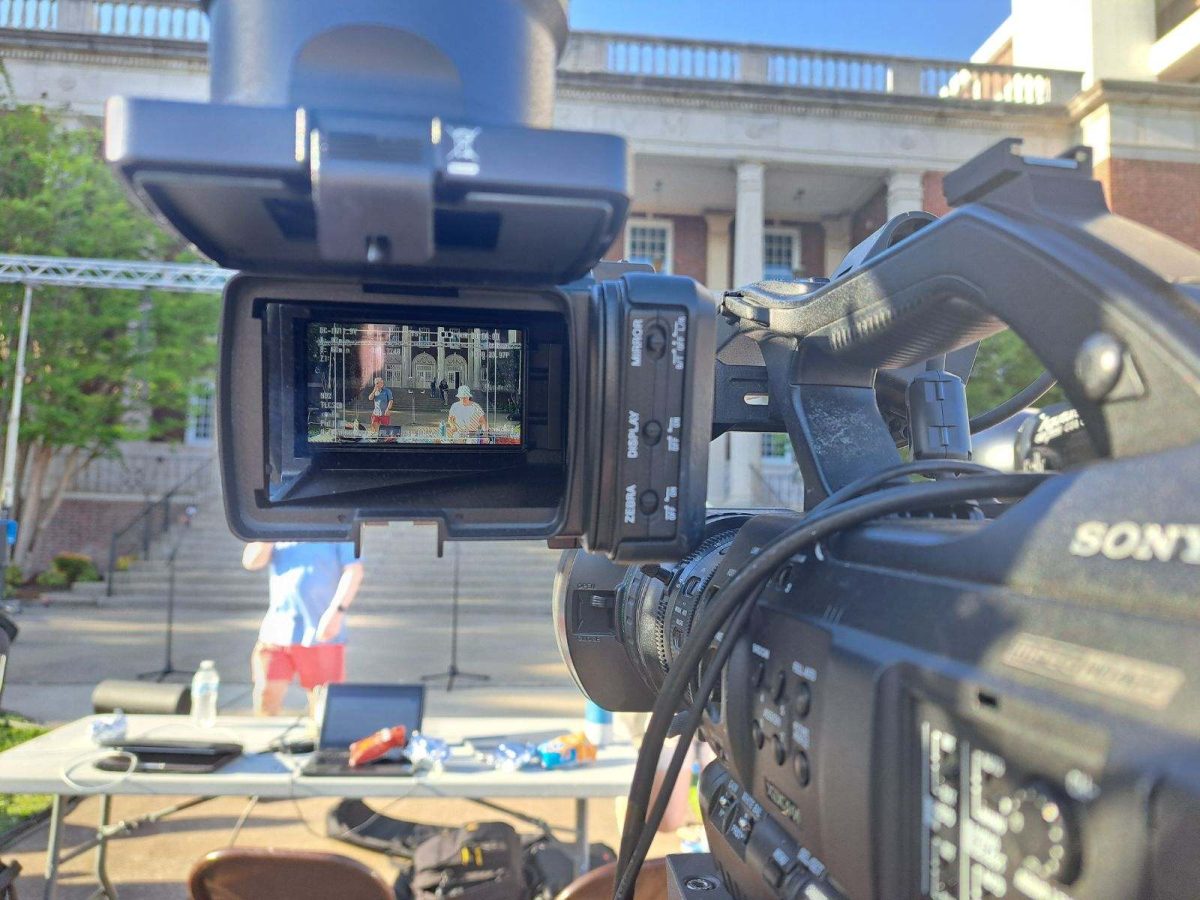Emery Wainscott
Contributing Writer
[email protected]
The annual University Town Hall took place virtually this year on Wednesday, April 14. President Bob Jackson outlined plans for the fall 2021 semester, detailed budget updates and how the Cost-of-Living Adjustment (COLA) will affect Murray State employees.
COVID-19 Restrictions
Jackson said the administration is planning for the fall 2021 semester to resemble the fall 2019 semester.
“After Commencement on May 8, 2021, we will begin transitioning to normal operations while adhering to continued guidance from our state and local health officials, as well as the Centers for Disease Control,” Jackson said in an email to students on March 25. “We will make all adjustments to operations in a safe and healthy manner.”
Jackson said although the University will offer primarily in-person classes, this doesn’t mean that they will de-emphasize remote, hybrid or online learning for students who wish to participate in these methods. He also urged students and staff to encourage each other to get vaccinated and follow Racer Safe and Healthy protocols.
Jackson said the University will continue to follow CDC and state guidelines on mask mandates, which he expects will last through the summer. In the next couple weeks, however, Jackson said he expects an ease of restrictions placed on Murray State as well as other universities and businesses.
“I learned several months ago during the pandemic not to predict too far out,” Jackson said. “A day or two at some points in this pandemic was too far to try and predict.”
As far as occupancy restrictions, Jackson said the University will be following state and CDC guidelines. When Kentucky gets to 2.5 million vaccinated persons, Jackson said he plans to follow Gov. Andy Beshear as he lifts the occupancy restrictions placed on events.
“There is light at the end of the tunnel,” Jackson said. “We’re at the beginning of the end and I think we’re even past the beginning of the end as we move to vaccinations, even on this campus.”
At the regional COVID-19 vaccination site in the CFSB Center, Jackson said the Johnson & Johnson vaccine was only given on March 11. Anyone who received the Johnson & Johnson vaccine on that day are past the time frame of concern for any risks.
Tuition and Dining Fees
Murray State’s proposed tuition rate for the 2021-22 academic year is $9,468. In comparison to other universities in Kentucky, the University’s tuition is ranked the third least expensive out of eight public universities. Jackson said he wants to maintain this position and the affordability to students and their families.
With this budget, the administration will recommend between a 0-1% increase for tuition rates, a zero percent increase for housing and a 3.35% increase for dining plans. For proposed housing rates, Murray State is fourth out of eight public universities at $2,769. For proposed dining rates, Murray State is also in fourth at $2,165 for the All-Access Premium Plan and $1,889 for the All-Access Plan.
As of this year, there are two dining options for first-time students: an All-Access Premium Plan and an All-Access Plan. Jackie Dudley, vice president of finance and administrative services, said these plans have differences but primarily there is unlimited access to Winslow Dining Hall.
The University will be offering two new options for the All-Access Plan. They will continue the 8 Meal Per Week plan for second-year students as well as the Flex-Only Plans. Dudley said the big change with the new plans is the addition of more options for Flex spending. The other options will remain the same price but have more Flex dollars incorporated for first-year students to access.
Jackson said the dining rate increase is because of the inflation of food prices and planned structural changes in dining operations requested by students.
Budget and Campus Projects
Jackson said overall, the University is $700,000 short of their budget projections, an amount that can be covered by the one-time budget contingency of $2 million.
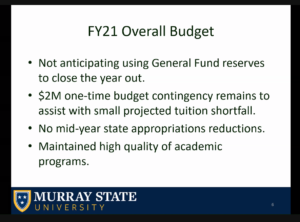
The state budget incorporated several approved projects. This includes a $12 million agency bond approval to allow the University to catch up on deferred maintenance and asset preservation projects.
“Lovett Auditorium needed work in the worst way,” Jackson said. “We hope to have [renovations] completed by mid-fall or the end of [the] fall semester. It’s a very, very important project to our students, our faculty and staff, teaching and learning, our academic departments.”
Jackson said his goal is to have a large end-of-the-year event with Lovett Auditorium completely renovated, which includes new seating, a new ceiling, a new HVAC control system and more.
“There are needs we must address,” Jackson said. “We got to take care of the buildings on our campus. They are state assets entrusted to us and some of them are approaching 100 years old.”
Deferred maintenance will be directed to Wrather Hall, the Curris Center, Racer Dining facilities and reviewing and renovating student housing as well as other historic campus buildings. Along with other building renovations, Jackson said all parts of the Curris Center are being examined by an architect and any future improvements made in the building will have to occur in phases.
In regards to enhancements for Woods Park, Dudley said a committee has been overseeing plans and collaborating with student groups on campus to utilize the space in the best way possible. The committee has considered options such as putting in an amphitheater, a pavilion and hammock stands to save Murray State’s historic trees, green space and more.
As far as other steps that are being taken for the budget, Jackson said that as the fiscal year begins so will hiring freezes.
“That doesn’t mean positions won’t be filled, but it means that at a vice president’s level or a presidential approval level will need to occur,” Jackson said. “For example, if there’s a faculty role that needs to be filled it will go up to the provost. He and I will make those approvals.”
Jackson said that other changes include overtime being eliminated, temporary employees will not be utilized, travel will be limited, spendages or budget transfers above $2,500 will need approval and all contracts will continue to be reviewed through the Procurement Services Office. All of these have few exceptions but can be approved by the vice president or president.
Jackson said other areas of the University are being reviewed for the budget as well. The final budget is not complete and will be edited during the next couple of weeks until the Board of Regents meeting in June.
Enrollment
Jackson said 71% of the budget is driven by enrollment and that recruitment is vitally important more than ever.
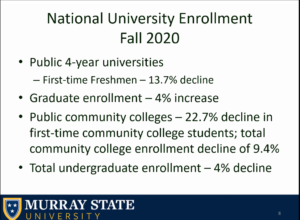
At Murray State for the second year in a row, first-time freshman enrollment increased six percent, first-time transfer enrollment increased 23% and first-time graduate enrollment was up 16%.
Jackson said Murray State’s retention rate is ranked first out of all the Kentucky universities with an 81% retention rate. Jackson said graduation rates are also at the top of the list in Kentucky, and student progression is important to funding and operations.
The community asked whether summer courses would be offered online or in-person. Provost Tim Todd said there will be a mixture with 46 in-person courses offered, 56 Zoom courses and 334 web courses. Todd said in 2020 there were no in-person classes, 49 Zoom courses and 315 web courses offered. In 2019, there were 237 web courses, 18 Zoom courses and 97 in-person courses offered.
Cost-of-Living Adjustment
Jackson said the Cost-of-Living Adjustment (COLA) is 2.15%, the highest the rate has been in seven years.
“The conversation really came up in 2018 that we were now able to implement this structured COLA where the average employee, the average faculty and staff member at Murray State University will receive a 2.15% increase,” Jackson said.
The COLA adjustment is one percent across the board plus a $500 flat increase for all employees hired before April 1, 2021. Jackson said employees below the average salary of $53,350 can earn up to a 3.5% raise. For employees above the average, the raise will be about 1.38%. The ranges of raises will be from 1.2-3.5%.
“You can see there are more individuals that will be receiving a greater than 2% raise than those who are receiving smaller raises,” Jackson said. “So there’s, for example, in the $40,000-$60,000 category, there’s 360 individuals. In the $20,000-$40,000 category, there’s 69. And the $20,000 category, there’s about 16 from that standpoint. So that will be the largest percentage raise. What we’re trying to do is bringing some equity and balance to this COLA model, this structure. I think it’s worked well and a lot of people are involved in crafting this.”
Jackson said Murray State was in the minority of universities this past year with no furloughs, no layoffs and no pay reductions. For the 2022 fiscal year, Jackson said priorities are student access and affordability and maintaining Murray State’s academic quality.
Pension
The University pays about $4 million a year into the Kentucky Employees Retirement System (KERS). Because of House Bill 8, this will double by about 99% to $8 million. In the 2022 fiscal year starting July 1, the General Assembly and state will pick up 100% of that cost. In the years following, the University will transition to funding more of that cost in 10% increments, until eventually the cost will be paid 50% by the University and 50% by the state.
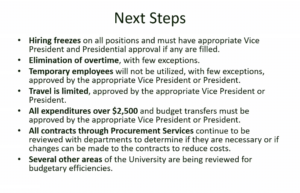
House Bill 8 is a 30-year agreement, so the KERS payment will be consistent for that duration.
The House Bill 258 for the Teachers Retirement System (TRS) is now only for new hires after Jan. 1, 2022. It is now 50% defined-contribution and 50% defined-benefit, whereas the previous model was a 100% defined-benefit plan. If someone is eligible for the TRS plan, they have the option of the retirement plan or this new plan after Jan. 1, 2022.
Jackson said that currently TRS is funded very well by legislation and the payments are projected at $4.8 million.
Jackson said the Budget Advisory Committee as well as other constituents have met regularly to address the University’s budget in the upcoming semesters. Jackson said although they talked about using the reserves this time last year, the University will not need general fund reserves to balance out the budget for this fiscal year.
“That’s good news, very good news,” Jackson said. “That was not the case last March, April and May and especially in June when we passed the budget that we’re currently in. The faculty, staff, and students of this institution and the leadership of this institution, deans and chairs and president’s counsel, has done an excellent job in managing their budgets, making sure we stayed on track. We will close out this year with a balanced budget.”



